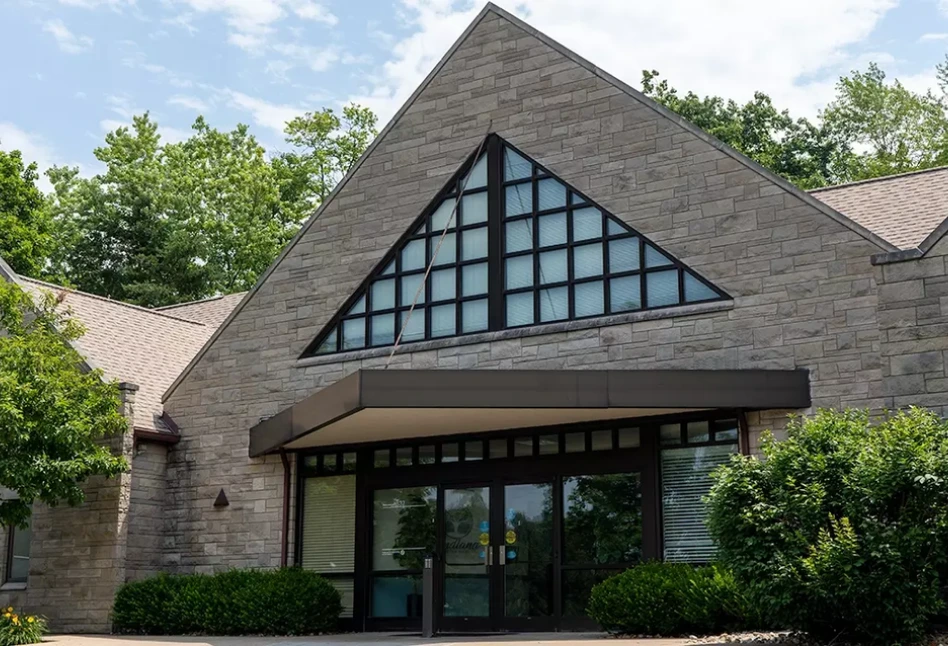What is TMS Therapy?
TMS stands for transcranial magnetic stimulation.’ It’s a non-invasive procedure to stimulate your brain using magnetic fields. By improving symptoms of depression, TMS helps patients who have tried other treatments like talk therapy, medication, or electroconvulsive therapy (ECT).
In that time, see how TMS procedures can make your depressive symptoms improve or disappear. Its experts continually improve their stimulation techniques, treatment sites, and effectiveness.
The FDA-approved therapy treats major depressive disorder and is one of the most intensive, last-resort options for those who struggle with its hopelessness and despair. Treatment sessions are repetitive and frequent, helping people lift themselves out of the worst episodes in six weeks or less.

What is TMS
Therapy Used for?
TMS treatments assist mood regulation. A brain stimulation therapy that can improve symptoms of mental health disorders, TMS is indicated for depression when other therapies and medications don’t work. It may help other conditions like anxiety, PTSD, bipolar, and more.
If you are someone who struggles with a mental health disorder like depression or anxiety, TMS therapy can be used to improve symptoms. Transcranial magnetic stimulation therapy, better known as TMS therapy, is a medical procedure that uses magnetic fields to stimulate specific regions of the brain. TMS therapy has demonstrated efficacy in reducing symptoms and improving mood in many patients. This is a noninvasive procedure and does not require surgery or medication. TMS therapy can help patients who cannot tolerate or benefit from other treatments such as talk therapy or medication. Not only has TMS therapy shown success in treating mental health issues, but it has also shown potential as a treatment option for conditions such as addiction, PTSD, and chronic pain. While it is important to remember that TMS is not a cure for any of these conditions, it’s a valuable treatment option for many people. Don’t forget to consult with a qualified healthcare professional to determine whether TMS therapy is right for you, and let’s talk about the different types of TMS therapy that have been developed by researchers. A traditional TMS procedure involves a machine that delivers a singular, uninterrupted signal to the brain. Repetitive TMS, which is also known as RTMS, involves delivering multiple electromagnetic signals turning on and off rapidly. Another type is deep TMS, which is known as DTMS. In this procedure, signals are sent about 4 cm into the brain, which is deeper than the first two types. During a TMS session, a magnetic coil is put onto the patient’s scalp while they are seated. This coil is what delivers short pulses of magnetic energy to the targeted area of the brain. The technician will adjust the intensity until the patient feels a tapping sensation on their scalp. By stimulating the left prefrontal cortex, which is an area of the brain associated with mood regulation, the symptoms of depression and the individual’s mood can be improved. This is noninvasive and lasts for about 30 to 60 minutes. AdditionaLly, patients will be able to return to their daily activities after the treatment. While this is an excellent procedure for those struggling with mental health issues like depression, there are also a number of other benefits such as an improved mood and interested activities, a reduced feeling of sadness and emptiness, regulated sleep, increased energy and decreased frustration and outbursts. As I mentioned before, it is important to consult with a healthcare professional to determine if this procedure is right for you.
TMS Treatment Preparation
Not all patients are compatible with TMS. Your doctor may need a physical exam and psychiatric evaluation to match you with the treatment. Without tests and discussion of your depression, it’s unclear whether repeated TMS is a good, safe option for lifting your condition.
For example, those who are pregnant, have implants, or have been taking certain medications may not be a good fit. It’s also important to disclose a medical history, including all of the following:
You won’t need sedation or much preparation for TMS treatments, even on an outpatient basis. You also don’t need to have a driver arranged after the procedure, but you should check that your insurance company covers the therapy. (Some choose to have a driver for the first appointment if they’re unsure how it will affect them.)

Insurance we Accept
Most treatment comes at little to no out-of-pocket expenses—depending on your insurance. Our insurance team verifies your coverage, benefits, and requirements to ensure medical necessity and minimize costs.
Verify your insurance with Indiana Center for Recovery to receive treatment at our Mishawaka facility. Our insurance staff can contact the insurer on your behalf and expose all the details of your coverage possibilities.


How Does TMS Therapy Work?
To deliver magnetic pulses to the brain during a TMS session, the technician applies a coil against the scalp. Near your forehead, the magnet painlessly sends energy that stimulates cells. These specific cells control emotions and influence affect, activating the area and improving mood. Because depression is thought to lower activity in key regions, the biological stimulation impacts brain function, easing depressive states.
Experts perform the procedure in different ways. They learn more about the most effective techniques with each study published supporting this therapy for treatment-resistant depression.
Common Side Effects of TMS Procedure
TMS works for people that standard treatment has failed. Multiple TMS sessions can treat depression when medications and talk haven’t. It is well-tolerated and safe for patients without the need for sedation. Overall, TMS spurs progress and sparks a boost. Some people experience short-lived side effects, but many are mild and moderate.
Patients feel a little discomfort at the stimulation site during the procedure, and some tolerate tingling, spasms, and twitching. There can be other side effects:
Transcranial Magnetic Stimulation, or TMS therapy, is an innovative and effective treatment option for people who have been struggling with mental health conditions and have not responded to other, common treatments. If you are someone who has tried other treatments like medication or talk therapy without success, TMS therapy may be the right choice for you. I’ll explain what TMS therapy is, who can benefit from it, what to expect during the treatment, and how it can help you overcome a treatment-resistant condition—one that hasn’t seen positive, lasting benefits with other methods. So, what is TMS therapy? TMS therapy is a non-invasive, painless, and effective treatment for various mental health conditions such as depression, anxiety, OCD, PTSD, chronic pain, and migraines. The treatment uses magnetic pulses to stimulate areas of the brain that are responsible for regulating mood, emotions, and other important functions. The magnetic pulses are delivered through a small coil that is placed on the scalp, and they are targeted to regions involved in the specific mental health condition being treated. Now, who can benefit from TMS therapy? TMS therapy is an effective treatment option for people who have not responded to other treatments such as multiple medications or other kinds of therapy. For example, if you have been struggling with depression and have tried multiple antidepressants without relief, TMS therapy may be the next step for you. Additionally, TMS therapy may be helpful for people who cannot tolerate the side effects of medications or who prefer not to take medications for personal reasons. It is important to note that TMS therapy is not a first-line treatment option for mental health conditions. Typically, it is considered only after other treatments have been tried and failed. However, if you are someone who has not found relief with other treatments, TMS therapy may be a viable option. But, what can you expect during TMS therapy? The TMS therapy process typically involves several sessions over a period of weeks. Each session lasts around 30 to 60 minutes, and most people need around 25 sessions to see optimal results. During treatment, you simply sit in a comfortable chair while a small coil is placed on your scalp. The coil delivers magnetic pulses to targeted areas of your brain, which may cause a light tapping or knocking sensation. Most people find TMS therapy to be a completely painless and comfortable experience. Though, some report mild discomfort or headaches during or after the treatment. These side effects are very often temporary and go away on their own. You will be able to resume normal activities immediately after each session, and there is no downtime associated with the treatment. So, let’s look at how TMS therapy can help. One common use for TMS therapy is in the treatment of depression. Depression is a complex and challenging condition that can be difficult to treat with traditional methods such as medication or therapy. However, studies have shown that TMS therapy can be an effective treatment option for people with depression who have not responded to other treatments. For example, a 2010 study published in the Archives of General Psychiatry found that TMS therapy was effective in reducing symptoms of depression in people who had not responded to antidepressant medication. Another TMS therapy is for the treatment of chronic pain. Chronic pain can be a debilitating condition that can impact all areas of a person’s life. While traditional pain medications can be ineffective or have unwanted side effects like addictiveness, TMS therapy has been shown to be an effective option, particularly in people with fibromyalgia or neuropathic pain. A 2015 study published in the Journal of Pain found that TMS therapy was highly effective in reducing pain severity and improving quality of life in people with such conditions. TMS therapy is an innovative and effective treatment option for people who have been struggling with mental health conditions that have not responded to other treatments. Even if you have been struggling with a stubborn mental health condition, such as depression, anxiety, OCD, PTSD, chronic pain, or addiction, TMS therapy may be the right choice for you. A 2019 study published in the Journal of Psychiatric Research found that TMS therapy was effective in reducing symptoms of ADHD in adults, while a more recent one found in the Journal of Psychiatric Research shows TMS reduced cravings and improved abstinence rates in people with cocaine use disorder. Research has even discovered that TMS therapy is effective at reducing symptoms of anorexia nervosa and improving body image perception. While TMS therapy is not a first-line treatment option for all mental illnesses, it is an effective option for people who have tried other treatments without the results they expected. The treatment is painless, non-invasive, and demands no downtime, making it a convenient choice for people with busy schedules such as parents, teens, and professionals. If you’re considering TMS therapy, it is important to consult with a healthcare provider to determine if the treatment is right for your specific needs and circumstances. Your provider can also answer the questions you may still have about the treatment process, side effects, and what to expect during and after sessions. In the final analysis, TMS therapy is a clinically proven treatment option for treatment-resistant mental health conditions. If you’ve tried medications, other therapies, holistic approaches, or natural remedies without success, TMS therapy may be the next step. Through a non-invasive, painless experience, TMS therapy is convenient and effective. Ask future providers about TMS because it may be the way to overcome your mental health challenges and improve overall quality of life.

TMS Session Experience
MS therapy is a good experience for most people. But it takes multiple appointments at a treatment provider for sessions to take effect. Typically, patients pace their sessions daily, five times per week for up to six weeks. Each treatment lasts about 40 to 60 minutes, making it an intensive option for stubborn depression. Its results change lives.
What are TMS sessions like?
At your first appointment, you’ll see how the doctor identifies the best forehead area to apply stimulation. They will also calculate an optimal dose of magnetic energy. In the treatment room, you’ll recline in a chair with earplugs. The coil placed on your head will pulse with a clicking sound.
You’ll feel a gentle tapping—mapping the region of the brain. Once the magnetic dose increases to its peak, your fingers may twitch slightly. At this point, the doctor finds a ‘threshold’ before deciding on a dosage that can be adjusted as treatment continues.
Follow-up sessions resemble the initial appointment. You’ll sit in a chair with a TMS technician, under the machine clicking, for around 40 minutes.
Results of TMS Therapy
Repeated TMS may benefit your depression. If transcranial magnetic stimulation works for you, symptoms can vanish. After a few weeks of treatment, you’ll see the improvement possible through this alternative to first-line therapies.
While it is unknown whether TMS will be helpful for you, some continue with maintenance sessions after the usual six-week period, hoping to stay symptom-free. TMS treatment can always be repeated. If an episode comes, this ‘re-induction’ is often covered by insurance companies. It’s something you would discuss with your doctor.
The results of TMS continue to improve as researchers, scientists, doctors, and their patient’s advance knowledge of the brain and its influence under magnetism.

Benefits of TMS Treatment and Therapy
TMS therapy for depression can help the 30 percent of people who don’t respond to medication and talk therapy. By addressing reduced activity in the prefrontal cortex, TMS can help:

TMS therapy helps many people return to day-to-day activities like work and school—freed from their depression, anxiety, PTSD, and OCD. For others, it reduces symptoms of being miserable and unhappy alongside other treatment modes.
Is TMS Safe and Covered by Insurance?
TMS is safe for most because everyone responds differently to magnetic stimulation. The procedure is non-invasive and only mildly uncomfortable during a relatively short treatment period.
As an FDA-approved therapy, most major insurance companies cover the sessions. Indiana Center For Recovery offers TMS therapy and may accept your insurance. Confirm your benefits with our counselors.
Indiana Center For Recovery provides safe, supervised support to people with all kinds of mental health conditions and substance use disorders. Anyone who wants to heal their lives from addiction and struggle has open access to proven treatments on our state-of-the-art campus.
If you grapple with depression, substance use, or another condition—connect with one of our counselors about your ideal recovery.

